The automotive market continues to evolve, offering a plethora of options for SUV enthusiasts. Two standout contenders are the Hyundai Kona and the MG ZS, each representing a unique blend of style, technology, and performance. As consumers look for vehicles that not only fit their lifestyle but also offer innovative features, we take a closer look at how these two models compare across various dimensions.
Hyundai Kona vs MG ZS – Which car suits you better?
Everyday use, family trips or long-distance drives – here’s where the differences show.
Discover whether Hyundai Kona or MG ZS fits your lifestyle better.
Design and Dimensions
Both the Hyundai Kona and MG ZS showcase modern SUV aesthetics but appeal to different sensibilities. The Kona measures 4,350 mm in length, with a width of 1,825 mm and a height of 1,585 mm, while the ZS is slightly larger at 4,323 mm in length, up to 4,430 mm, with a width of 1,809 to 1,818 mm and a height of 1,649 mm. The compact design of the Kona is perfect for urban driving, whereas the slightly taller profile of the ZS provides additional cabin space and a commanding view of the road.
Powertrain Options
The Hyundai Kona offers versatility with a selection of petrol, full hybrid, and electric powertrains. It features power outputs ranging from 100 HP to 218 HP, catering to a wide array of performance preferences. The ZS, in contrast, primarily focuses on electric and hybrid variants, offering power outputs up to 197 HP. This makes the Kona a better choice for buyers looking for diverse powertrain options, while the ZS stands out in the electric segment.
Performance and Acceleration
When it comes to performance, the heat is on. The Kona can go from 0 to 100 km/h in as little as 7.8 seconds, a figure that speaks to its sporty leanings, particularly with the higher power electric variants. The MG ZS performs well too, with a quick sprint of 8.6 seconds, reflecting its sporty character among compact SUVs. Both models boast impressive top speeds, with the Kona reaching up to 201 km/h, slightly eclipsing the ZS’s maximum speed of 175 km/h.
Fuel Efficiency and Range
For eco-conscious buyers, fuel efficiency is key. The Kona excels in this area with petrol versions averaging between 5.7 to 6.7 L/100km, while the electric variants showcase a consumption of roughly 14.6 kWh/100km and an electric range of up to 514 km. The MG ZS presents a competitive offering with electric consumption figures around 17.3 kWh/100km and an electric range of 440 km, alongside hybrid options with slightly lower fuel consumption of around 5 to 5.1 L/100km.
Interior Comfort and Technology
Both vehicles seat five and come equipped with modern conveniences and technology to enhance the driving experience. The Hyundai Kona is known for its upscale interior quality, supported by a user-friendly infotainment system. In comparison, the MG ZS also offers a well-appointed interior but often emphasizes value over high-end materials. Both vehicles incorporate advanced safety features, accommodating tech-savvy consumers looking for connectivity and convenience.
Conclusion: Which One Should You Choose?
The decision between the Hyundai Kona and MG ZS ultimately comes down to personal preferences regarding style, drivetrain choice, and technology. For those seeking a more dynamic driving experience with diverse powertrain options, the Kona holds a slight edge. On the other hand, the MG ZS makes a strong case with its competitive price point and solid electric offerings. Both models represent good value in today’s SUV landscape, catering to a range of needs and budgets.
Here’s where it gets real: The technical differences in detail
Costs and Efficiency:
Price and efficiency are key factors when choosing a car – and this is often where the real differences emerge.
MG ZS has a noticeable advantage in terms of price – it starts at 18000 £, while the Hyundai Kona costs 23100 £. That’s a price difference of around 5066 £.
Fuel consumption also shows a difference: Hyundai Kona manages with 4.60 L and is therefore slight more efficient than the MG ZS with 5 L. The difference is about 0.40 L per 100 km.
Engine and Performance:
Power, torque and acceleration are the classic benchmarks for car enthusiasts – and here, some clear differences start to show.
When it comes to engine power, the Hyundai Kona has a hardly perceptible edge – offering 218 HP compared to 197 HP. That’s roughly 21 HP more horsepower.
In acceleration from 0 to 100 km/h, the Hyundai Kona is to a small extent quicker – completing the sprint in 7.80 s, while the MG ZS takes 8.70 s. That’s about 0.90 s faster.
In terms of top speed, the Hyundai Kona performs a bit better – reaching 210 km/h, while the MG ZS tops out at 179 km/h. The difference is around 31 km/h.
There’s also a difference in torque: Hyundai Kona pulls convincingly stronger with 265 Nm compared to 148 Nm. That’s about 117 Nm difference.
Space and Everyday Use:
Beyond pure performance, interior space and usability matter most in daily life. This is where you see which car is more practical and versatile.
Both vehicles offer seating for 5 people.
In curb weight, MG ZS is slight lighter – 1330 kg compared to 1370 kg. The difference is around 40 kg.
In terms of boot space, the Hyundai Kona offers minimal more room – 466 L compared to 443 L. That’s a difference of about 23 L.
In maximum load capacity, the MG ZS performs a bit better – up to 1457 L, which is about 157 L more than the Hyundai Kona.
When it comes to payload, Hyundai Kona barely noticeable takes the win – 490 kg compared to 470 kg. That’s a difference of about 20 kg.
Who wins the race?
The Hyundai Kona proves to be leads convincingly overall and therefore becomes our DriveDuel Champion!
Hyundai Kona is the better all-rounder in this comparison.
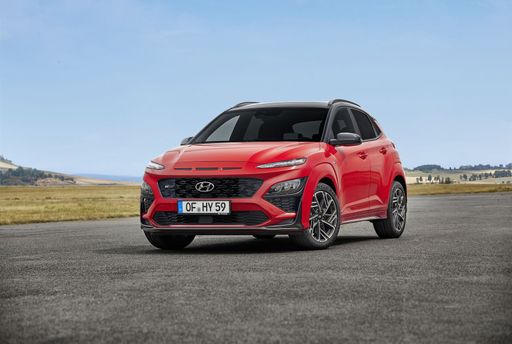 @ Hyundai Motor Company
@ Hyundai Motor Company
Hyundai Kona
Hyundai Kona
The Hyundai Kona wears its personality on the outside with bold styling and sprightly handling that turns city driving into something a little more fun than a commute. It blends practical space, modern tech and sensible running costs into a compact, stylish package — a smart pick if you want flair without paying luxury prices.
details @ Hyundai Motor Company
@ Hyundai Motor Company
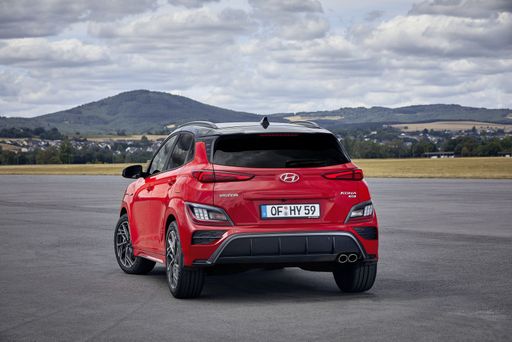 @ Hyundai Motor Company
@ Hyundai Motor Company
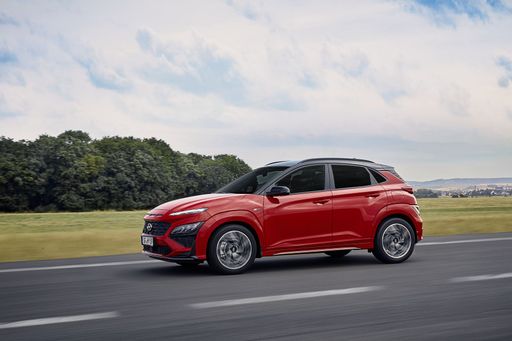 @ Hyundai Motor Company
@ Hyundai Motor Company
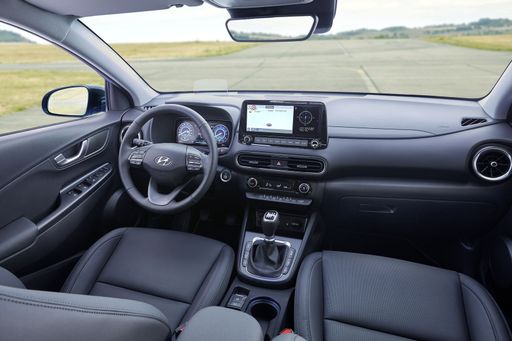 @ Hyundai Motor Company
@ Hyundai Motor Company
MG ZS
The MG ZS arrives as a cheeky and practical choice for shoppers who want SUV style and family-friendly space without blowing the budget. It may not pretend to be premium, but with sensible equipment, easy-to-live-with driving manners and surprising value, it makes a persuasive case for anyone after sensible transport with a bit of personality.
details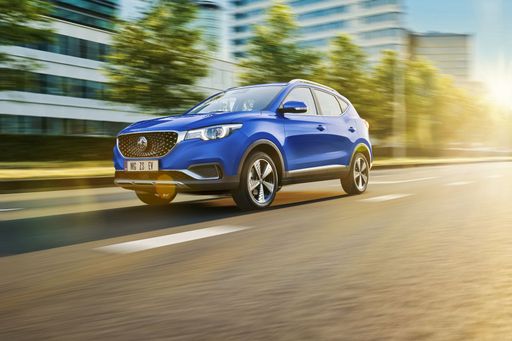 @ MG Motor / SAIC Motor Corporation
@ MG Motor / SAIC Motor Corporation
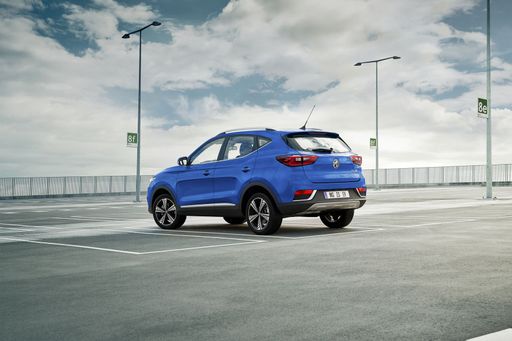 @ MG Motor / SAIC Motor Corporation
@ MG Motor / SAIC Motor Corporation
 @ MG Motor / SAIC Motor Corporation
@ MG Motor / SAIC Motor Corporation
 @ MG Motor / SAIC Motor Corporation
@ MG Motor / SAIC Motor Corporation
 @ MG Motor / SAIC Motor Corporation
@ MG Motor / SAIC Motor Corporation
 @ Hyundai Motor Company
@ Hyundai Motor Company
|
 @ MG Motor / SAIC Motor Corporation
@ MG Motor / SAIC Motor Corporation
|
|
|
|
Costs and Consumption |
|
|---|---|
|
Price
23100 - 41600 £
|
Price
18000 - 23100 £
|
|
Consumption L/100km
4.6 - 7 L
|
Consumption L/100km
5 - 6.5 L
|
|
Consumption kWh/100km
14.6 - 16.8 kWh
|
Consumption kWh/100km
-
|
|
Electric Range
377 - 514 km
|
Electric Range
-
|
|
Battery Capacity
1.3 - 65.4 kWh
|
Battery Capacity
-
|
|
co2
0 - 163 g/km
|
co2
113 - 145 g/km
|
|
Fuel tank capacity
38 - 47 L
|
Fuel tank capacity
41 - 55 L
|
Dimensions and Body |
|
|---|---|
|
Body Type
SUV
|
Body Type
SUV
|
|
Seats
5
|
Seats
5
|
|
Doors
5
|
Doors
5
|
|
Curb weight
1370 - 1773 kg
|
Curb weight
1330 - 1420 kg
|
|
Trunk capacity
466 L
|
Trunk capacity
443 L
|
|
Length
4350 - 4385 mm
|
Length
4430 mm
|
|
Width
1825 mm
|
Width
1818 mm
|
|
Height
1580 - 1585 mm
|
Height
1635 mm
|
|
Max trunk capacity
1300 L
|
Max trunk capacity
1457 L
|
|
Payload
420 - 490 kg
|
Payload
375 - 470 kg
|
Engine and Performance |
|
|---|---|
|
Engine Type
Electric, Petrol, Full Hybrid
|
Engine Type
Full Hybrid, Petrol
|
|
Transmission
Automatic, Manuel
|
Transmission
Automatic, Manuel
|
|
Transmission Detail
Manual Gearbox, Dual-Clutch Automatic
|
Transmission Detail
Automatic Gearbox, Manual Gearbox
|
|
Drive Type
Front-Wheel Drive, All-Wheel Drive
|
Drive Type
Front-Wheel Drive
|
|
Power HP
115 - 218 HP
|
Power HP
116 - 197 HP
|
|
Acceleration 0-100km/h
7.8 - 11.9 s
|
Acceleration 0-100km/h
8.7 - 12.5 s
|
|
Max Speed
162 - 210 km/h
|
Max Speed
168 - 179 km/h
|
|
Torque
200 - 265 Nm
|
Torque
148 Nm
|
|
Number of Cylinders
3 - 4
|
Number of Cylinders
4
|
|
Power kW
85 - 160 kW
|
Power kW
85 - 145 kW
|
|
Engine capacity
998 - 1598 cm3
|
Engine capacity
1495 - 1498 cm3
|
General |
|
|---|---|
|
Model Year
2024 - 2025
|
Model Year
2024 - 2025
|
|
CO2 Efficiency Class
A, D, C, E, F
|
CO2 Efficiency Class
C, E
|
|
Brand
Hyundai
|
Brand
MG
|
Is the Hyundai Kona offered with different drivetrains?
Available configurations include Front-Wheel Drive or All-Wheel Drive.
The prices and data displayed are estimates based on German list prices and may vary by country. This information is not legally binding.
